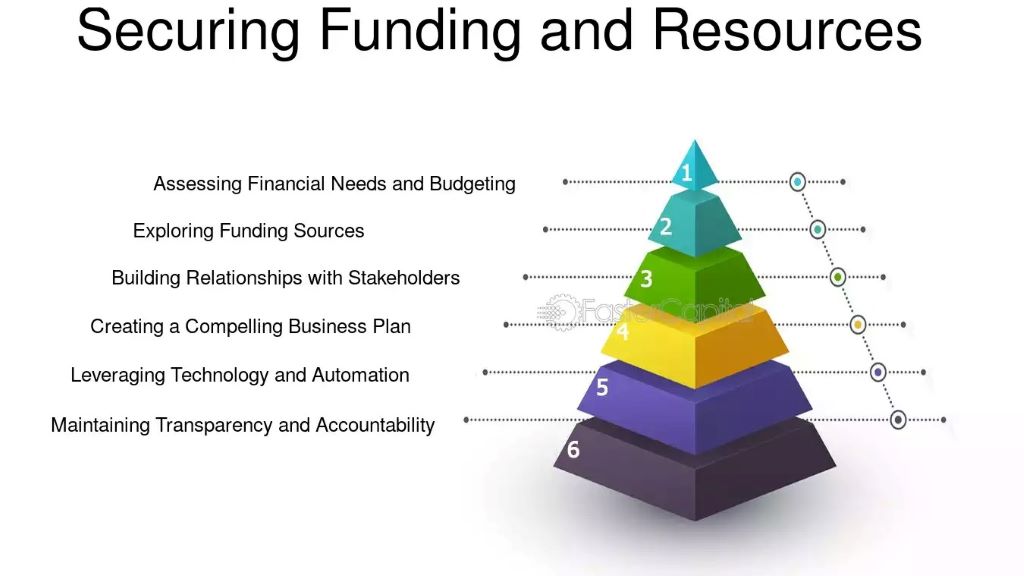How to Present a Project Dossier to Investors: A Comprehensive Guide to Securing Funding

In today’s competitive business landscape, presenting a compelling project dossier to potential investors has become a critical skill for entrepreneurs and business leaders seeking funding. Whether you’re launching a startup or expanding an existing venture, the ability to communicate your vision effectively through a well-structured project dossier can make the difference between securing investment and walking away empty-handed. Career professionals and entrepreneurs alike recognize that mastering this art requires careful planning, strategic thinking, and professional presentation skills that platforms like Career Beez often emphasize in their career development resources.
Understanding the fundamentals of investor psychology and expectations forms the foundation of successful project dossier presentations. Investors typically review dozens of proposals monthly, making it essential to capture their attention immediately while demonstrating clear value propositions and realistic returns on investment. Therefore, creating an effective project dossier involves more than simply compiling financial projections and market research; it requires crafting a narrative that resonates with investor priorities and risk tolerance levels.
The preparation phase represents perhaps the most crucial element in presenting your project dossier successfully. Research your target investors thoroughly, understanding their investment history, preferred sectors, and typical deal sizes. Additionally, analyze their portfolio companies to identify common characteristics and success factors that align with your project. This preliminary research enables you to tailor your presentation approach and emphasize aspects of your project that will likely appeal to their specific investment criteria.
Essential Components of a Winning Project Dossier
Every successful project dossier must include several key components that investors expect to see. The executive summary serves as your elevator pitch in written form, providing a concise overview of your business opportunity, target market, competitive advantages, and financial projections. However, this summary should never exceed two pages while still covering all critical aspects of your proposal comprehensively.
Market analysis represents another fundamental element that demonstrates your understanding of industry dynamics and customer needs. Investors want to see evidence of market demand, size calculations, growth projections, and your strategy for capturing market share. Furthermore, include detailed competitor analysis showing how your solution differentiates itself and maintains competitive advantages over time.
Financial projections form the backbone of investor decision-making processes. Present realistic revenue forecasts, expense budgets, cash flow projections, and break-even analyses covering at least three to five years. Moreover, include sensitivity analyses showing how different scenarios might impact financial outcomes, demonstrating your awareness of potential risks and opportunities.
The management team section should highlight key personnel qualifications, relevant experience, and track records of success. Investors often invest in people rather than just ideas, making it crucial to showcase your team’s ability to execute the proposed strategy effectively. Additionally, identify any gaps in your team and explain how you plan to address them through future hiring or advisory board appointments.
Crafting Your Presentation Strategy
Developing an effective presentation strategy requires understanding your audience and adapting your message accordingly. Begin by structuring your presentation to follow a logical flow that guides investors through your value proposition systematically. Start with the problem you’re solving, followed by your solution, market opportunity, business model, competitive landscape, financial projections, and funding requirements.
Storytelling techniques can significantly enhance your presentation’s impact by making your project more memorable and engaging. Instead of simply presenting dry facts and figures, weave a narrative that illustrates real customer problems and how your solution transforms their experiences. However, maintain professionalism and credibility by supporting your story with concrete data and evidence.
Visual aids and presentation materials play a vital role in maintaining investor attention and communicating complex information effectively. Use professional slide decks with clean designs, readable fonts, and compelling graphics that support your key messages. Nevertheless, avoid cluttered slides or excessive text that might distract from your verbal presentation.
Practice your presentation extensively, anticipating potential questions and preparing thoughtful responses. Rehearse with colleagues, mentors, or advisors who can provide feedback on your delivery, content clarity, and overall persuasiveness. Therefore, you’ll feel more confident and polished when presenting to actual investors.
Managing Investor Meetings and Follow-ups
The actual investor meeting represents your opportunity to bring your project dossier to life through personal interaction and relationship building. Arrive early, dress professionally, and bring physical copies of your project dossier even if you’ve shared digital versions previously. Additionally, prepare backup plans for technical difficulties that might interfere with digital presentations.
During the presentation, maintain eye contact with all attendees, speak clearly and confidently, and encourage questions throughout rather than waiting until the end. Investors appreciate interactive discussions that allow them to explore specific aspects of your proposal in greater detail. Furthermore, listen carefully to their concerns and feedback, taking notes that demonstrate your attentiveness to their input.
Following up after investor meetings proves equally important as the initial presentation itself. Send personalized thank-you emails within 24 hours, addressing any questions that arose during the meeting and providing additional information as requested. Moreover, maintain regular communication with interested investors while respecting their time constraints and decision-making processes.
Documentation and follow-through separate professional entrepreneurs from amateurs in investor relations. Keep detailed records of all interactions, including meeting notes, questions asked, concerns raised, and next steps discussed. Consequently, you can tailor future communications and demonstrate your commitment to transparency and professionalism.

Common Pitfalls and How to Avoid Them
Many entrepreneurs make critical mistakes when presenting project dossiers that can derail potential investment opportunities. Overestimating market size or growth potential represents one of the most common errors that immediately raises red flags with experienced investors. Instead, provide conservative estimates supported by credible market research and clearly explain your methodology for calculating projections.
Underestimating competition or claiming no direct competitors exists immediately signals inexperience or inadequate market research. Every business faces competition, whether direct or indirect, and investors expect realistic competitive analyses that acknowledge threats while highlighting your advantages. Therefore, present honest assessments of competitive landscapes and your strategies for differentiation and market penetration.
Financial projections that appear overly optimistic or lack supporting assumptions often damage credibility with potential investors. According to research from Harvard Business School, successful entrepreneurs typically present multiple scenarios including conservative, expected, and optimistic projections with clear explanations of underlying assumptions.
Inadequate preparation for due diligence processes can derail investment discussions even after successful initial presentations. Ensure all financial records, legal documents, intellectual property filings, and operational data are organized and readily available for investor review. Additionally, address any potential legal or regulatory issues proactively rather than waiting for investors to discover them during due diligence.
Leveraging Technology and Digital Platforms
Modern investment processes increasingly incorporate digital platforms and virtual presentation technologies. Familiarize yourself with common video conferencing tools, screen sharing applications, and digital document sharing platforms that investors might prefer using. However, ensure backup communication methods are available in case technical issues arise during important presentations.
Data rooms and secure document sharing platforms streamline due diligence processes while maintaining confidentiality and security. Organize your project dossier materials in logical folder structures with clear naming conventions that make navigation easy for investors and their advisors. Furthermore, maintain version control to ensure everyone accesses the most current information throughout the evaluation process.
Social media and professional networking platforms can support your investor outreach efforts when used strategically and professionally. LinkedIn provides opportunities to research investor backgrounds, identify mutual connections, and establish initial contact through warm introductions. Nevertheless, maintain professional boundaries and avoid overly aggressive or persistent outreach that might damage your reputation.
Building Long-term Investor Relationships
Successful entrepreneurs understand that investor relationships extend far beyond initial funding rounds. Even investors who ultimately decline participation in your current project might represent future opportunities as your business evolves or for subsequent ventures. Therefore, maintain professional relationships through periodic updates on company progress and industry developments.
Transparency and regular communication build trust and credibility with both current and potential investors. Share both positive developments and challenges honestly, seeking advice and input when appropriate. Additionally, celebrate milestones and achievements while acknowledging the support and guidance provided by your investor network.
Network expansion occurs naturally through existing investor connections who can introduce you to other funding sources, strategic partners, customers, and industry contacts. Leverage these relationships thoughtfully and reciprocate by providing value to your investor network through industry insights, deal flow opportunities, or introductions to other entrepreneurs seeking funding.
Measuring Success and Continuous Improvement
Track key metrics related to your investor outreach efforts, including response rates, meeting requests, follow-up engagements, and ultimate funding success rates. Analyze patterns in investor feedback to identify areas for improvement in your project dossier content, presentation delivery, or overall strategy. Consequently, you can refine your approach and increase effectiveness over time.
Seek feedback from investors regardless of their funding decisions, as their insights can prove valuable for future presentations and business development efforts. Many investors willingly provide constructive criticism when approached professionally and respectfully. Moreover, implementing suggested improvements demonstrates your coachability and commitment to continuous improvement.
Frequently Asked Questions
What is the ideal length for a project dossier?
A comprehensive project dossier should typically range from 20-30 pages, including executive summary, detailed business plan sections, financial projections, and supporting appendices. However, the executive summary alone should never exceed 2 pages, as investors often use this section to determine whether the full dossier merits detailed review.
How far in advance should I start preparing my project dossier?
Begin preparing your project dossier at least 2-3 months before actively seeking investors. This timeframe allows adequate time for market research, financial modeling, competitive analysis, and multiple review cycles with advisors or mentors who can provide valuable feedback on content and presentation quality.
Should I customize my project dossier for different types of investors?
Yes, customization is essential for maximizing investor interest and relevance. Tailor your project dossier to emphasize aspects that align with each investor’s focus areas, investment criteria, and portfolio preferences while maintaining core content integrity and accuracy throughout all versions.
What financial information do investors expect to see in a project dossier?
Investors typically expect comprehensive financial projections including revenue forecasts, expense budgets, cash flow statements, profit and loss projections, and break-even analyses covering 3-5 years. Additionally, include funding requirements, use of funds breakdown, and sensitivity analyses showing various scenario outcomes.
How should I handle intellectual property concerns when sharing my project dossier?
Use non-disclosure agreements (NDAs) when sharing sensitive information, though recognize that many investors prefer initial discussions without NDAs. Focus on communicating your value proposition and market opportunity while protecting truly proprietary information until later due diligence stages when legal protections are in place.
Conclusion
Successfully presenting a project dossier to investors requires careful preparation, strategic thinking, and professional execution across multiple touchpoints in the funding process. From initial market research and financial modeling through presentation delivery and follow-up communications, every element contributes to building investor confidence and securing funding commitments.
The investment landscape continues evolving with new technologies, changing investor preferences, and shifting market dynamics that successful entrepreneurs must navigate skillfully. By focusing on clear value propositions, realistic financial projections, and authentic relationship building, you can create compelling project dossiers that resonate with potential investors and advance your funding objectives.
Remember that securing investment represents just the beginning of longer-term partnerships that can provide not only capital but also strategic guidance, industry connections, and operational expertise. Therefore, approach each investor interaction as an opportunity to build meaningful relationships that can support your venture’s growth and success over time.
Read More:
What is the Best Way to Reduce IT Cost?
The Role of Payroll Services in Ensuring Employee Financial Security






